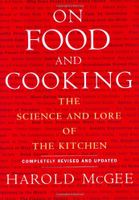Stir-Frying and Sweating
By Harold McGee
Published 2004
Two important variations on frying exploit opposite ends of the temperature scale. One is high-temperature stir-frying. The vegetables are cut into pieces sufficiently small that they heat through in about a minute, and they’re cooked on a smoking-hot metal surface with just enough oil to lubricate them, and with constant stirring to ensure even heating and prevent burning. In stir-frying it’s important to preheat the pan alone and add the oil just a few seconds before the vegetables; otherwise the high heat will damage the oil and make it unpalatable, viscous, and sticky. The rapidity of stir-frying makes it a good method for retaining pigments and nutrients. At the other extreme is a technique sometimes called “sweating” (Italian soffrito or Catalan soffregit, both meaning “underfrying”): the very slow cooking over low heat of finely chopped vegetables coated with oil, to develop a flavor base for a dish featuring other ingredients. Often the cook wants to avoid browning, or to minimize it; here the low heat and oil function to soften the vegetables, develop and concentrate their flavors, and blend those flavors together. Vegetables cooked in a version of the confit are immersed in oil and slowly cooked to soften them and infuse them with the oil’s flavor and richness.
Become a Premium Member to access this page
Unlimited, ad-free access to hundreds of the world’s best cookbooks
Over 160,000 recipes with thousands more added every month
Recommended by leading chefs and food writers
Powerful search filters to match your tastes
Create collections and add reviews or private notes to any recipe
Swipe to browse each cookbook from cover-to-cover
Manage your subscription via the My Membership page
Part of
Advertisement
Related Recipes
-
-
-
-
Related Reference
-
-
-
-
Advertisement



